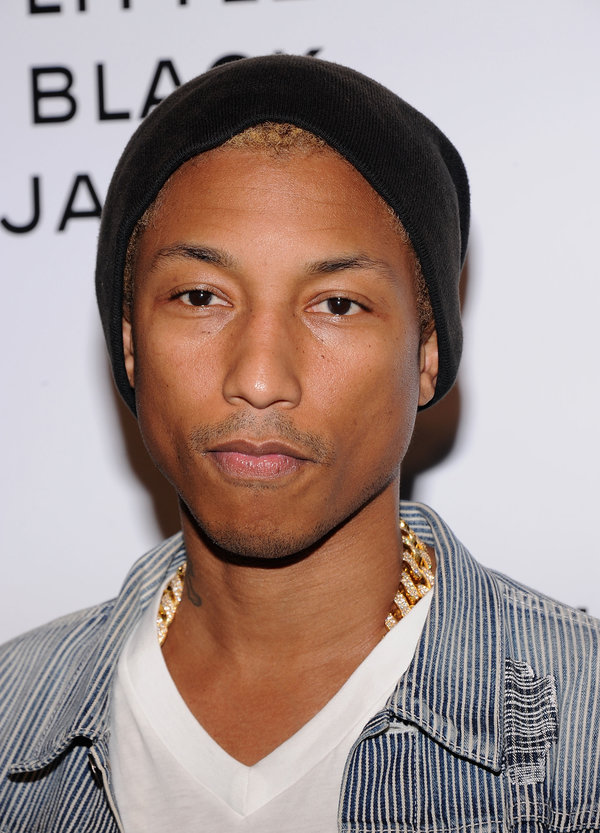
The multi-hyphenate musician has a lesser-known empire in the design world. Over the course of a career that spans nearly three decades, Pharrell Williams—the ageless mastermind behind such chart-topping hits as “Happy” and “Blurred Lines“—has managed to secure a spot in the exclusive no-last-name-required celebrity club. And while he’s predominantly recognized for his success in the music industry, the 43-year-old Williams is something of a design connoisseur:
He’s created jewelry for Louis Vuitton, collaborated on an Art Basel–showcased piece with Takashi Murakami, and designed furniture alongside Domeau & Pérès; he also owns a museum-worthy collection of contemporary sculptures, paintings, and statues that would make Pop Art admirers weak in the knees. But it’s Williams’s streetwear-centric clothing label, Billionaire Boys Club, that’s been his primary focus of late. The brand recently unveiled a shiny new flagship in downtown Manhattan—designed by Brooklyn-based firm Snarkitecture—where shoppers can browse through a curated selection from Williams’s own line, in addition to brands like Adidas and Kanye West’s label, Yeezy.
Though Williams insists he left most of the store’s creative direction to Snarkitecture cofounder Daniel Arsham, the Grammy winner’s stamp is decidedly present. Vibrant, Murakami-designed cushions sit beside racks of neutral-hued clothing, and quirky sculptures by the artist KAWS are scattered throughout. Here, Williams chats with AD about the concept behind the flagship, his most meaningful design purchase, and the man he turns to for artistic inspiration.
Architectural Digest: How much influence did you have in conceptualizing the new store?
Pharrell Williams: I really let Snarkitecture do what they do best and design the entire space. When they showed me the concept on paper, we made a few minor changes, but all of it was their idea based on the direction of the brands we carry.
AD: Can you describe the overall aesthetic?
PW: The store is very simple. We wanted to give the product room to shine, so Snarkitecture basically whitewashed everything. We carry some colorful stuff, so [the products] really pop in the space once they get placed on the fixtures.
AD: What people, places, or things are inspiring your design sensibility these days?
PW: I travel a lot and get inspired everywhere I go, but nowhere is more inspiring than Japan. The design, creative, and merchandising there is on a whole other level. It also helps to have a friend like [Japanese fashion designer/Billionaire Boys Club cofounder] Nigo, who, to me, has the greatest taste. I don’t know how many times I’ve been to Japan, but every time he shows me something new that blows my mind.
AD: Do you have your eye on any new pieces for your home?
PW: I just picked up some Prouvé auditorium seats. I’m also looking at this Marc Newson bed and this Tati couch that my friends Domeau & Pérès make.
AD: You own homes in Miami, Los Angeles, and Virginia Beach. Do they each have a different vibe?
PW: Each has a different vibe and purpose. The penthouse in Miami wasn’t a convenient setup to raise a family; it fit the needs of a younger me. The house in L.A. gives us more space, but I miss the ocean. They both have great views, but nothing beats looking out the window and seeing turquoise water. My house in Virginia Beach is right on the water.
AD: Is there anything you’d change about them?
PW: I just renovated the house in L.A. to make it green, and that’s definitely something I’m going to make a focus when buying any future properties.
AD: You have quite an impressive art collection. What’s one piece that you consider to be your most meaningful purchase?
PW: I don’t buy anything that’s not meaningful. You have to surround yourself with things that have a purpose and a clear function. Maybe our large Murakami Flower Ball—it usually makes people smile when they see it.
